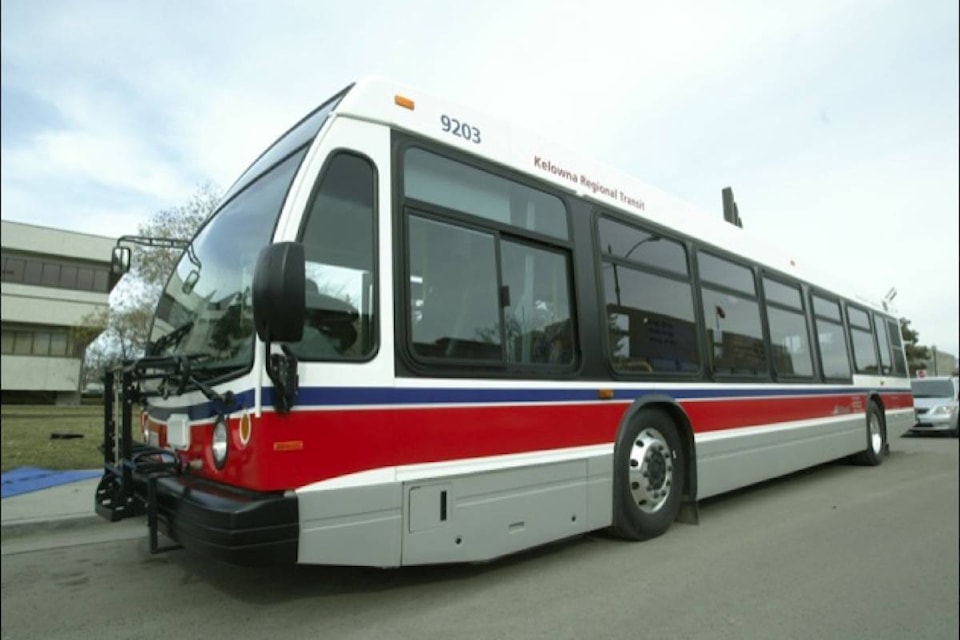The idea of expanding public transit in Kelowna beyond bus service is unlikely for the next 20 years, says a city council transportation report.
The report says focusing new development around transit corridors and giving buses priority over other traffic at key locations is recommended for growing transit ridership and getting Kelowna drivers to leave their vehicles at home.
“It is unlikely that any corridor in the city will have the density for mass transit to be economically feasible over the next 20 years, however, building on the frequency and reliability of existing bus service can move us incrementally towards mass transit, and help keep Kelowna moving,” said the report.
The report is the first of three Facts in Focus presentations by the city integrated transportation department to council for the city’s transportation master plan now under development following public forum consultation with the community.
The other two presentations will be on the themes of congestion paradox at the Aug. 13 council meeting, and the principles for an uncertain future anticipated for some time in November.
The report identifies mass transit options as streetcars, at a cost of $37-51 million per kilometre to build; bus rapid transit, $3-14 million per kilometre; and light rail transit, $91-181 million per kilometre.
The concept behind mass transit to work is bringing together a large concentration of people who work and live close to a transportation corridor.
Related: New summer bus route between Kelowna and West Kelowna
While no detailed study has been undertaken, the report says some commonly suggested Kelowna corridors tend to be:
* Harvey Avenue/Highway 97 (downtown core to Kelowna airport, 13 km): Half the city’s jobs are located within 800 metres of the highway but only about 15 per cent of residents live within walking distance.
*CN Rail Corridor (Downtown to Kelowna airport, 14 km): Because the existing right-of-way is largely separated from other traffic, reliable and fast transit service could be installed along this corridor, but that creates a significant land use change along the corridor and is quite far from destinations clustered around Highway 97.
Pandosy Street (Downtown to South Pandosy, 3 km): Major destination points include Kelowna General Hospital, South Pandosy Urban Centre and Okanagan College, but limited road space along Pandosy to separate transit from other traffic.
The report states for more people to choose transit, the service has to be reliable, frequent, fast and less expensive than driving. Currently, vehicles transport about 77,000 people a day along Harvey Avenue.
Related: Central Okanagan transportation plan in the works
“Since most transit trips begin and end on foot, both the origin and destination have to be within walking distance of a transit stop for it to be a viable option,” the report concluded.
The report also cited the need for transit bus service to be separated from existing traffic, with transit lanes or traffic signal priority, to flow faster than regular traffic and offer competitive option to driving.
To report a typo, email: edit@kelownacapnews.com.
<>@BarryGerding
barry.gerding@blackpress.ca
Like us on Facebook and follow us on Twitter.
